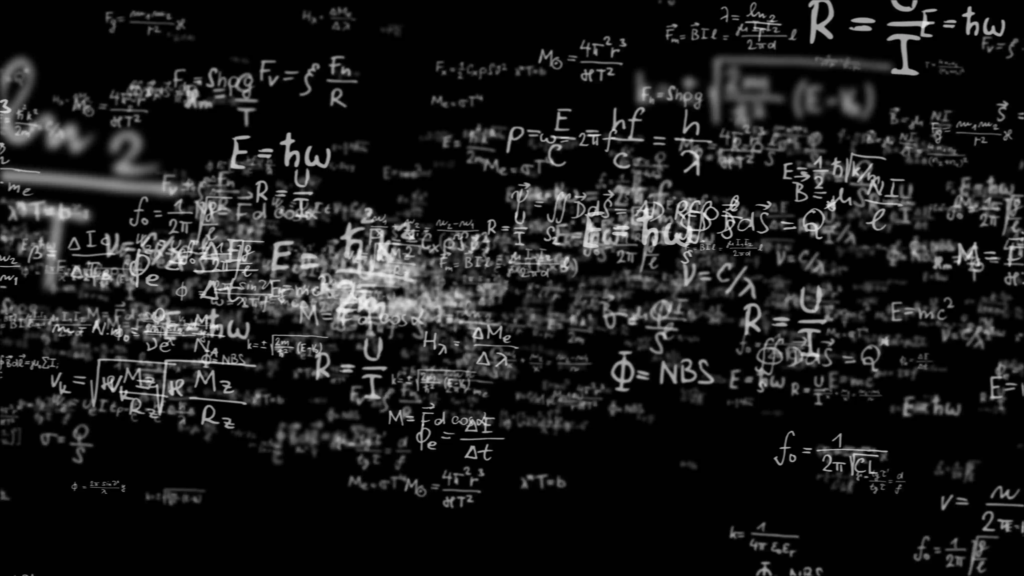Mathematics defines the progress of humanity
Humanity progresses Humanity is experiencing a stage of undeniable progress that translates into a combination of economic, technological, scientific, cultural, and organizational advances that affect the entire planet. Our World in Data is a publication directed by economist Max Roser at the University of Oxford, which has studied global living conditions over the last two […]

Humanity progresses
Humanity is experiencing a stage of undeniable progress that translates into a combination of economic, technological, scientific, cultural, and organizational advances that affect the entire planet. Our World in Data is a publication directed by economist Max Roser at the University of Oxford, which has studied global living conditions over the last two hundred years through different parameters.[1] During this period, in percentage figures referring to all inhabitants of the Earth, extreme poverty has gone from affecting 80% of the population to less than 10%; literacy in people over 15 years of age has gone from 10% of the population to 87% today; infant mortality from 43% two hundred years ago has been reduced to 4% today; the number of people living in a democratic regime was insignificant two centuries ago and is currently 54%. It must be said that all the curves representing these parameters maintain a more or less uniform progression, with a marked positive change in slope over the last forty years. Another way of emphasizing this progress would be to say that the number of people living on more than $10 a day increased by a quarter of a million every day in the last decade.
Progress is attributed to very different causes, particularly scientific progress that allows the expansion of the technological frontier or the universalization of trade. But, in fact, the factors involved are so varied and numerous that we do not know precisely their interrelation and, therefore,
the causes of this accelerated progress that we are experiencing. For this reason, the birth of a new academic field is being promoted, which has already been baptized as “studies on progress”, which allows the dissection of the causes of human progress in order to make it advance better.[2]
In any case, progress is there, and modern man has no choice but to be proud of it. A statement that President Obama expressed in these terms: “If you had to choose a moment in history in which you could be born, and you didn’t know in advance who you were going to be — what nationality, what sex, what race, whether you were going to be rich or poor, gay or straight, what creed you were going to be born into — you wouldn’t choose 100 years ago. You wouldn’t choose the 1950s, or the 1960s, or the 1970s. You would choose right now.”[3]
Mathematics, the deep substratum of progress
However, we do know the deep substratum that underlies progress: mathematical language. Mathematics is the language of science, technology and engineering. But also of many other activities in our daily lives. Far from the widespread thinking that associates mathematics exclusively with complex formulas, intricate equations and abstract concepts typical of the academic field, the reality is that it plays a fundamental role in our daily lives, shaping the world around us in numerous ways. In the personal sphere, mathematics provides us with the tools and skills necessary for ordinary purchases and payments, personal financial management, or the management of our time or schedules. The entire digital world around us is made possible by complex mathematical algorithms and principles.
Beyond the personal sphere, mathematics provides the vital basis for knowledge of economics and financial services and is increasingly important in biology, medicine, and many of the social sciences. In short, without mathematics, there would be no technological and social advances that shape the reality we live in and are proud of.
This intimate relationship over time between mathematical knowledge and progress has led Lancelot Hogben to affirm: “The history of mathematics is the mirror of civilization.”[4]
The Hindu-Arabic numbering system transformed Medieval Europe
What happened in the 13th century in Europe shows us how far civilisation advances in step with mathematical evolution. At the beginning of that century, Europe was still using the Roman numeral system. A system in which the symbols to represent quantities consisted of capital letters with a fixed numerical value which, when they appeared in the figure, were added or subtracted depending on their position, to create higher numbers. This system was adequate for addition and subtraction, but other arithmetic operations were more difficult. The absence of zero and irrational numbers, impractical and imprecise fractions and difficulties with multiplication and division made calculations extremely cumbersome procedures, which prevented progress in number theory.
And, almost suddenly, everything began to change with the introduction of Arabic algebra into Europe. The most important milestone that favoured this introduction was the publication in 1202 of Leonardo of Pisa’s Liber Abaci, better known as Fibonacci. In this book, aimed at merchants and scholars, Fibonacci, based on examples from commercial and everyday life, introduced Hindu-Arabic numerals and basic algebra, showing how these tools could be used to perform standard arithmetic calculations and solve commercial problems such as profit sharing. This was followed by a rapid diffusion of this new numerical system, which is basically the one we use today throughout the world. It spread throughout Europe through education, through the proliferation of textbooks and the creation of schools of mathematics. The introduction of mathematics into human affairs led to advances in accounting, finance, taxation, demography and economics. And a commercial revolution took place which, as Raymond de Roover has stated, marked a before and after in European economic history[5]. And in addition to revolutionizing economic and commercial practices, it transformed other fields such as the visual arts, architecture, shipbuilding, surveying, cartography, topography, physics and engineering. It was this mathematical revolution that created modernity, developing a process that continues to this day.
A legacy from the distant past
But to find the origin of this numbering system, whose use became widespread so quickly in Europe, we must go back thousands of years and travel to the lands of Mesopotamia, where around 4500 BC the Sumerian civilization prospered. The Sumerians were succeeded in these same lands by the Akkadians and later by the Babylonians, maintaining a continuity in their cultural development. In addition to developing the oldest known writing system, they conceived a mathematical system that evolved over four thousand years, reaching very high goals if we compare it with even later civilizations.
A work that we must value with admiration given the material circumstances in which it was developed, writing on wet clay tablets that were baked in the sun. And yet, they laid the foundations of mathematics as we know it today.
A fundamental aspect of this system is the principle of position: the value of each digit of the number depends on the position in which it is found. This allows the same symbols to be reused, so that very large numbers can be represented with few symbols. Unlike the base 10 decimal system that we use today, they used a base 60, or sexagesimal, system; In this way, instead of using nine digits, from 1 to 9, as we do today, they used fifty-nine, that is, from 1 to 59. They also developed another revolutionary mathematical concept, something that the Egyptians and Romans did not have: a circular character for zero, although its symbol was more of a placeholder than a number in itself.
Their mathematics was largely an applied science focused on practical problems that could be solved algorithmically. Rulers needed to know, for example, the number of workers and days needed for the construction of a canal, and the calculation of the total expenses of workers’ wages. In their calculations, they used fractions, methods for solving linear, quadratic, and even some cubic equations, as well as the calculation of square roots. They used the famous Pythagorean theorem more than a thousand years before the birth of this Greek mathematician.
The Persian conquest in the 6th century BC It ended with Babylonian culture, but somehow the idea of positional notation was able to reappear in India a thousand years later, in the 5th century AD, adopting the decimal base and also introducing zero as a number. Coinciding with the stage of development of Islam, this system spread throughout the Arab world, and that is why we know it as the Hindu-Arabic numbering system.
Every time we look around us and take pride in the progress our society makes every day, we should take a moment and remember the Sumerians and their remarkable contributions. Their legacy reminds us of the importance of mathematics in shaping our world.
Manuel Ribes – Life Sciences Institute – Bioethics Observatory – Catholic University of Valencia
***
[1] Max Roser (2016) – “The short history of global living conditions and why it matters that we know it” https:// ourworldindata.org/a-history-of-global-livingconditions
[2] Garrison Lovely Do we need a better understanding of ‘progress’?BBC 16 June 2022
[3] Remarks by the President at Howard University Commencement Ceremony The White House Office of the Press Secretary, May 07, 2016
[4] Lancelot Hogben Mathematics for the million W. W. Norton & Company Reissue 2015 ISBN. 9780393347227
[5] Raffaele Danna, The spread of Hindu-Arabic numerals among practitioners in Italy and England (13th-16th c.): two moments of a European innovation cycle? Firenze University Press 2023 DOI: 10.36253/979-12-215-0092-9.06
Related

Current Status of the College of Cardinals
Exaudi Staff
23 April, 2025
14 min

The Challenges of the Next Pope and the Path of Grace
Javier Ferrer García
23 April, 2025
4 min

Pope Francis’ Spiritual Testament
Exaudi Staff
22 April, 2025
1 min

“You give us hope and remind us that God does not forget us” importa
Exaudi Staff
22 April, 2025
5 min
 (EN)
(EN)
 (ES)
(ES)
 (IT)
(IT)

